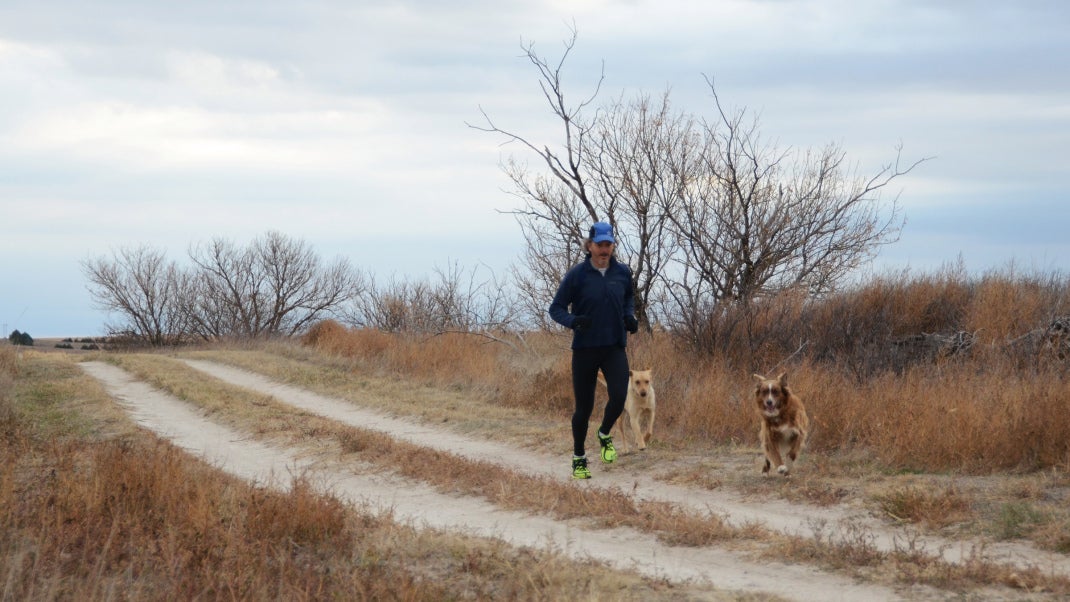The Process is the Goal

I’ve never felt less able or less motivated to set running goals than I do now — and I’ve never needed them more.
I, like everyone, am demoralized by the ongoing lack of races. I’ve never been more aware how central racing is to my motivation and identity, even during years in which I’ve only run two or three of them. Races, I recognize more than ever, have formed the backbone of my goals since the beginning, whether it be running a Boston Qualifier or being fit enough to beat a rival in the local Fourth of July 5K. And, while we’ve learned that virtual races are better than nothing, we all now have an informed opinion that they are a sorry substitute to the shared experience of a race day.
Compounding my ennui is the new reality of a knee that may never be completely “better.” I’ve come a long way from not being able to run at all last August to getting out 3–4 times per week with a long run (so far) of a nearly pain-free 6 miles. I’m able to do fairly regular speed workouts, and I exceeded my (low) expectations in a 5K time trail. But I can’t tell day to day how my knee will feel when I wake or what it will let me do.
That uncertainty is what robs me of the ability to dream and set goals. Adjusting for getting slower with age has never thrown me much, as the process of getting faster — go longer, work harder — has stayed the same and provided familiar feedback and satisfaction. Now, for the first time, I’m faced with a variable in my body that doesn’t seem to follow a predictable curve in response to workout stress.
I’m still hopeful this will change in the future — like all lifetime competitors, I have a hard time accepting permanent diagnosis or arbitrary limits to all future endeavors. But in the meantime, I’m fully understanding, and adopting, what 61-year-old lifetime competitor and coach Mike Fanelli told me was a key to longevity in the sport when I interviewed him for my book, Run Strong, Stay Hungry.
“Can you stay in a space of management and maintenance, and push as close to the edge of capacity in training, while working with whatever elements and pieces and parts of the puzzle that no longer work,” Fanelli said. “There are things that no longer work. That doesn’t mean you can’t run, you just have to understand what you can do to maximize fitness while looking after the damage and trying to keep the damage from expanding, and readjusting your goals and expectations.” Management and maintenance, limiting damage to parts that don’t work anymore is a far cry from what running has long been in my life: sometimes an effortless, floating joy, sometimes blowing past all warning signals with reckless abandon. But it is worth it, as my runs, no matter how slow and short, still provide joy and leave me with a satisfaction and peace not found elsewhere.
The uncertainty, however, still remains, within and without, and I need goals to strive and hope toward — we all do. PodiumRunner is going to examine goals this month with an eye to the fact that none of us can plunge back into our familiar fallbacks this year. We’ll range from the psychology of what makes a goal motivating and satisfying, to exploration of a wide variety of creative goals for runners, to practical advice such as how to measure progress and success in mobility and strength work. Our first two pieces are Matt Fitzgerald’s examination of how being an ultra-realist allows top competitors to adapt their goals and stage comebacks, and Cathy Utzschneider’s exploration of process goals and research into best practices in achieving them. And mark your calendars for January 20 at 5:00 p.m. MST for a live webinar with sports psychologist Justin Ross on how we can set meaningful goals this year and leverage them to become better runners.
I’m going to be mining this material for help getting out of my personal goal bog, starting with elevating process goals to central status in my running right now. I’ve long bought in to setting process goals that we can control, but usually think of them as means to an end, steps leading to my real goal. Just for now, with the end obscured in a fog, I’m going to try to focus on simply doing as the goal, and focus on celebrating the fact that I can — and am — doing things I love.
Case in point: Yesterday my schedule called for 200m repeats. I came very close to scrapping it when I started the run and my knee was so stiff from some holiday hikes that I limped along with a 2-foot stride for half a mile. But after warming up and doing some light drills, I did the workout. I got in 10 x 200m at current 5K race-pace, and I felt fast, and disciplined, and young. Whether or not the repeats lead to a time I’ll be proud of somewhere down the line, I’m uncertain and trying not to care. My goal? Do a recovery run today, do my strength, mobility and massage work, don’t do anything stupid, and be ready to do a tempo run on Thursday. For now, the process is the goal, and the reward.